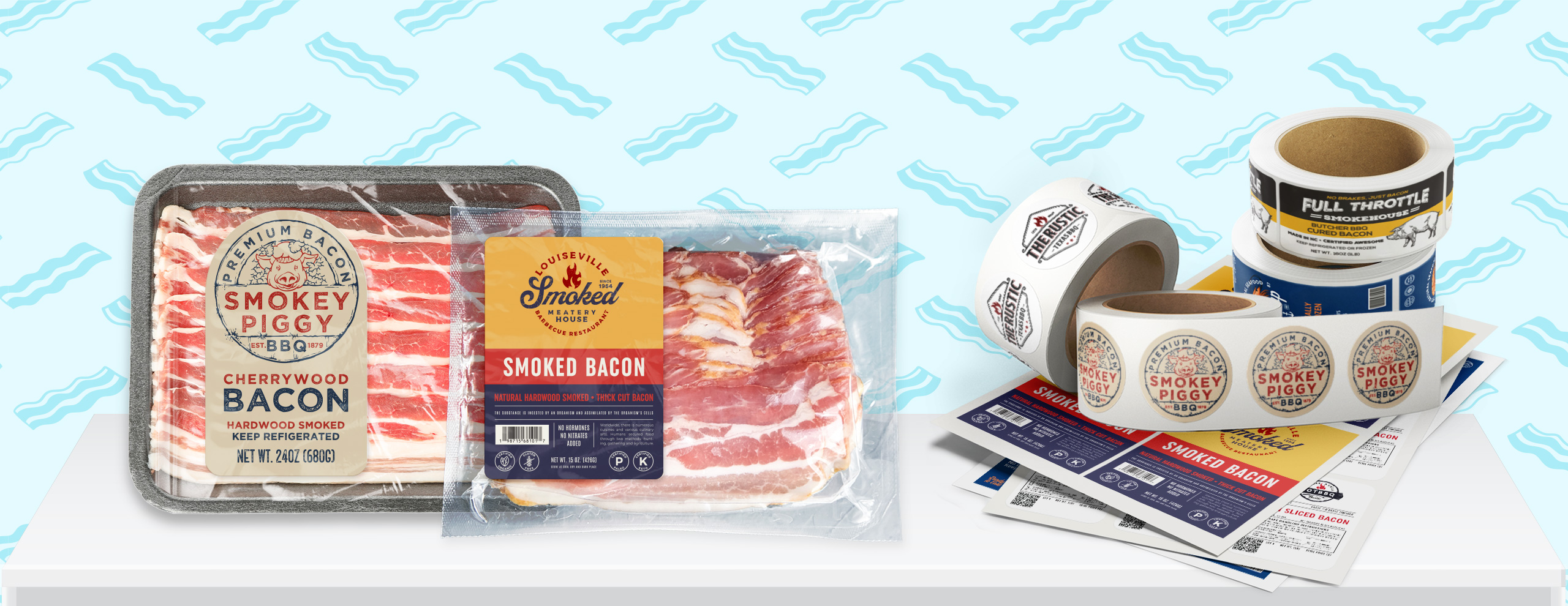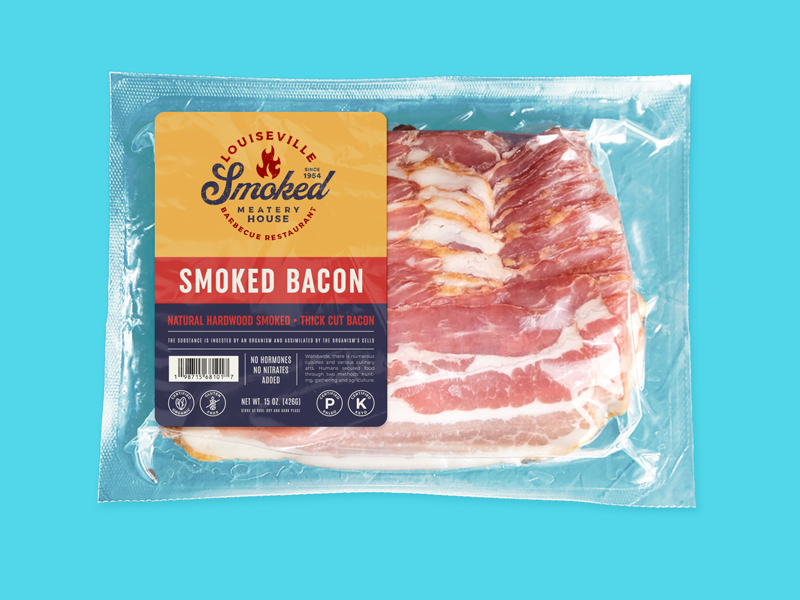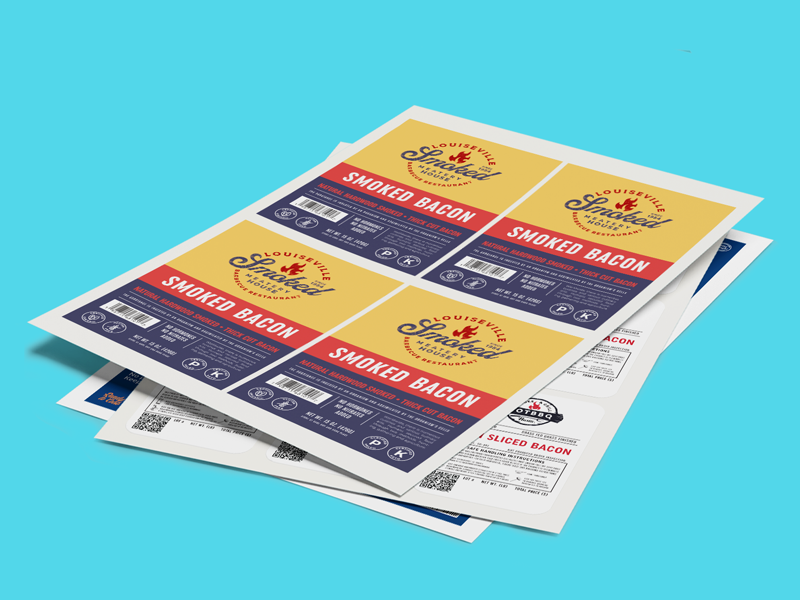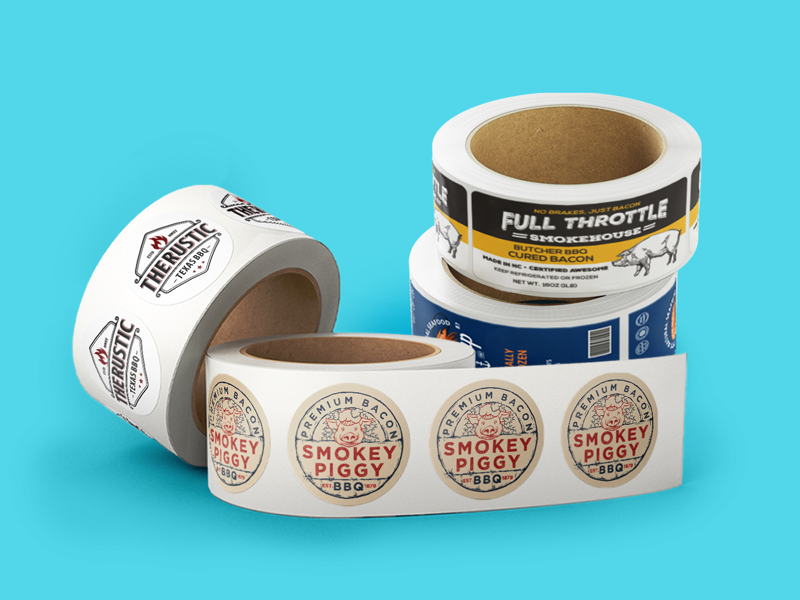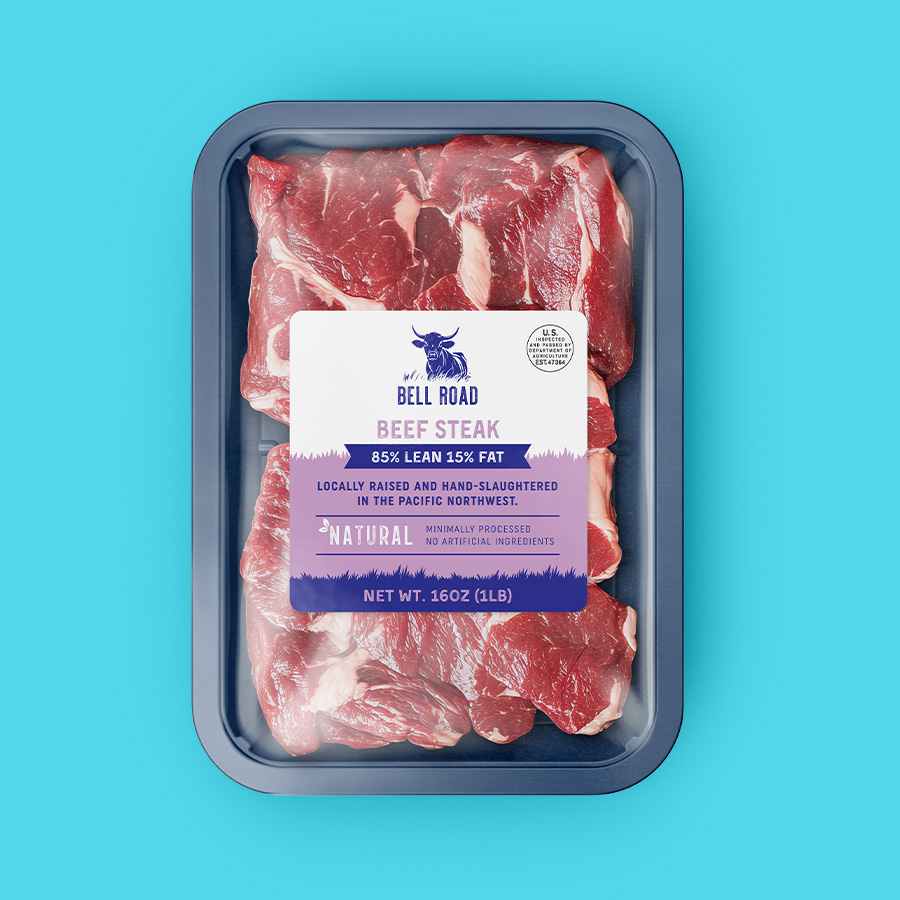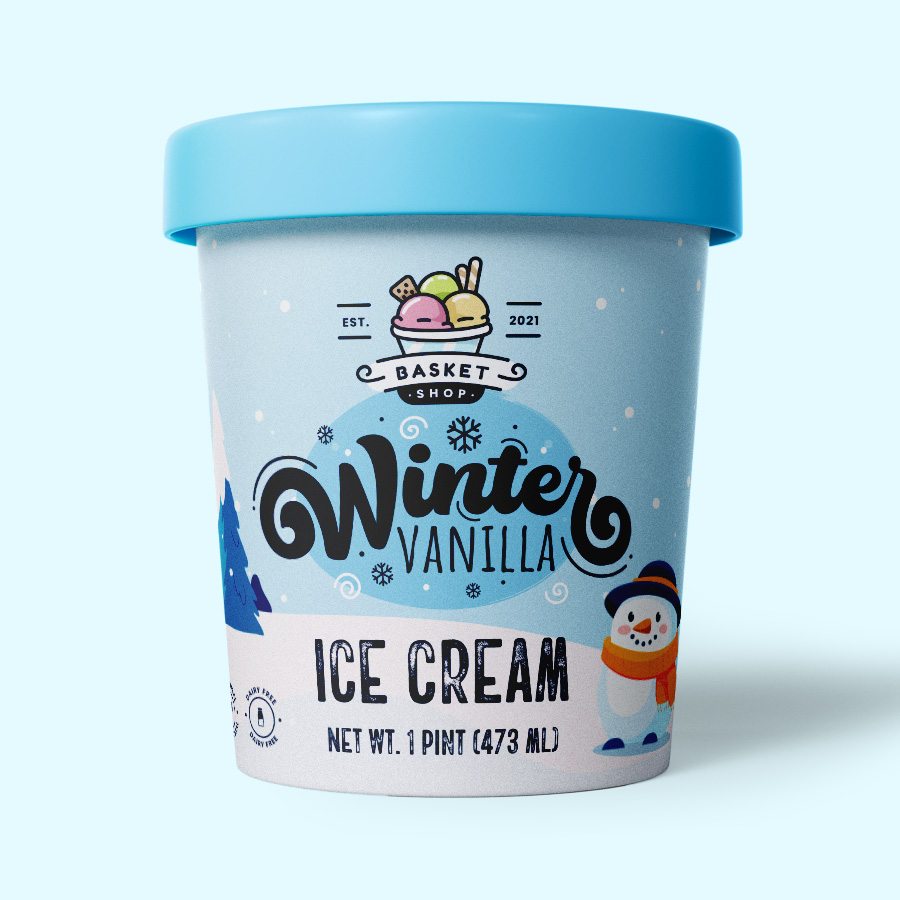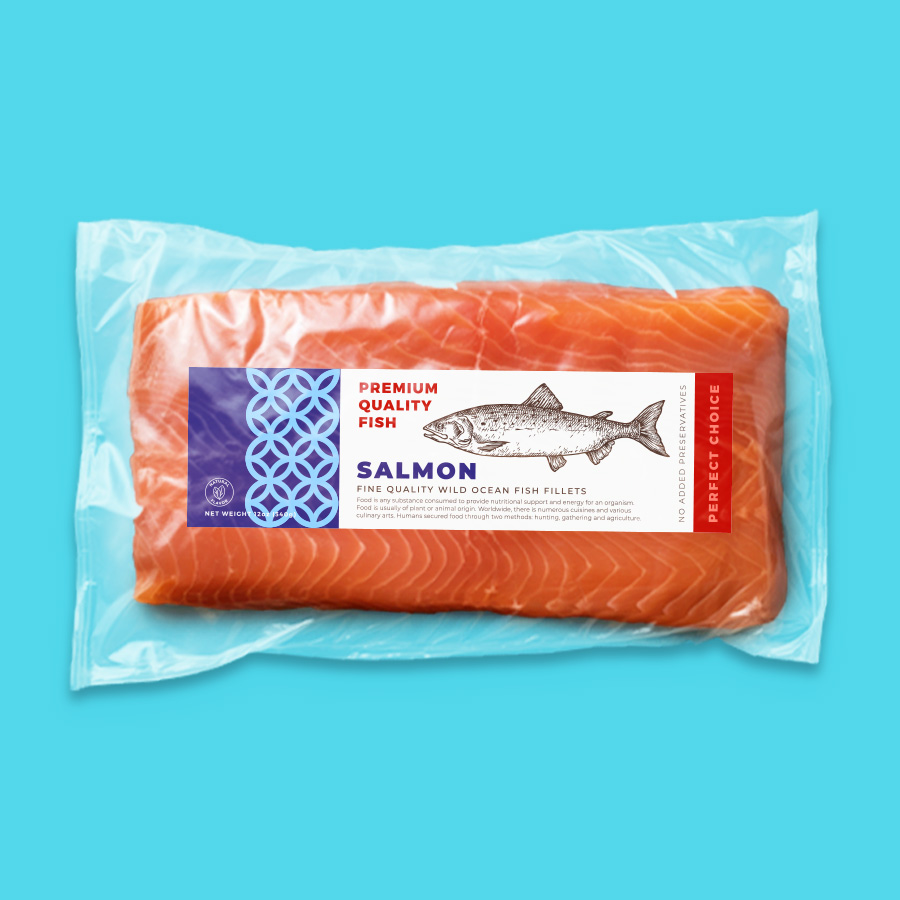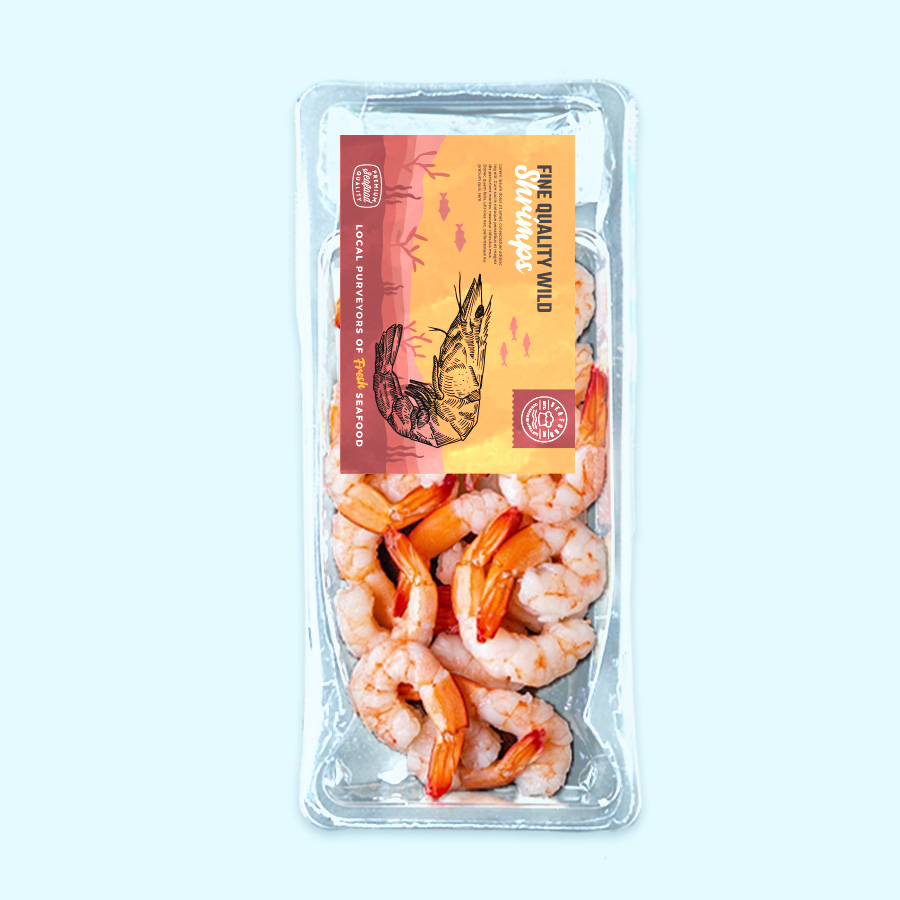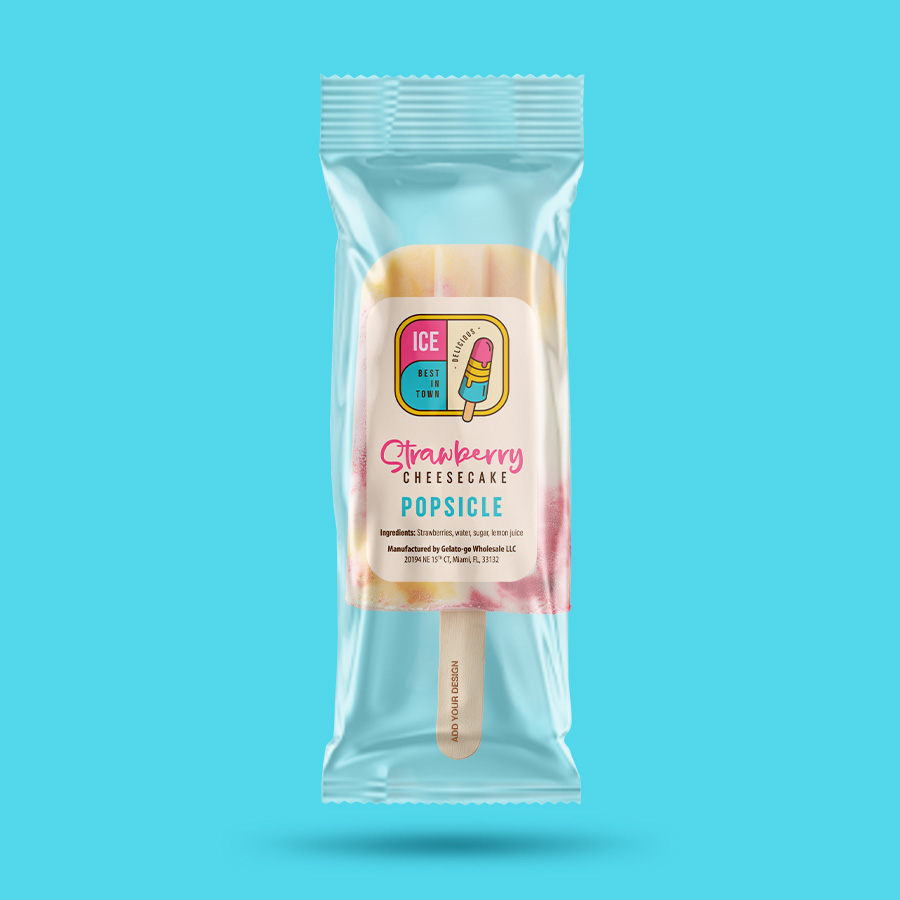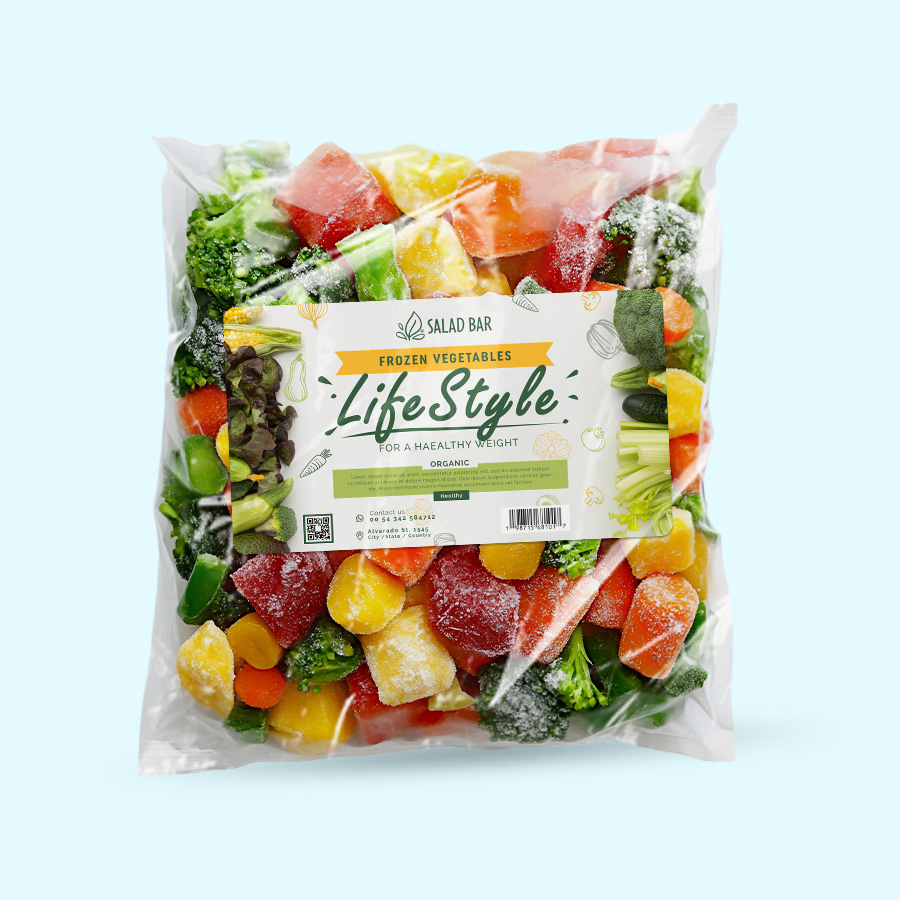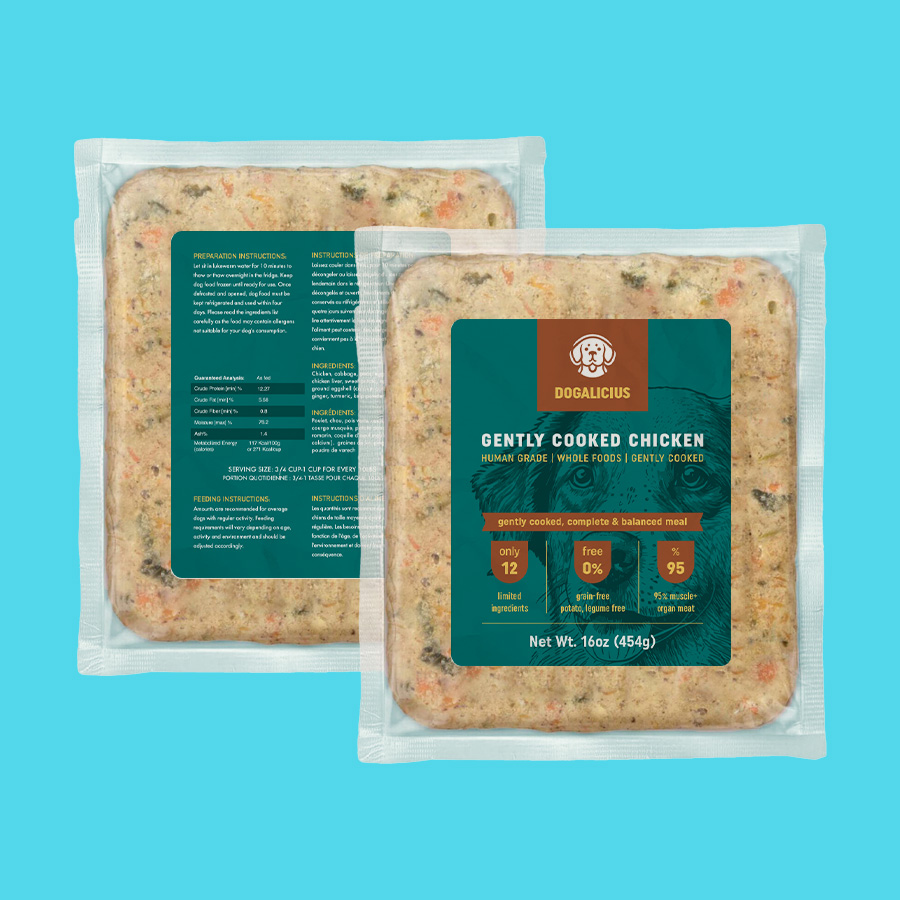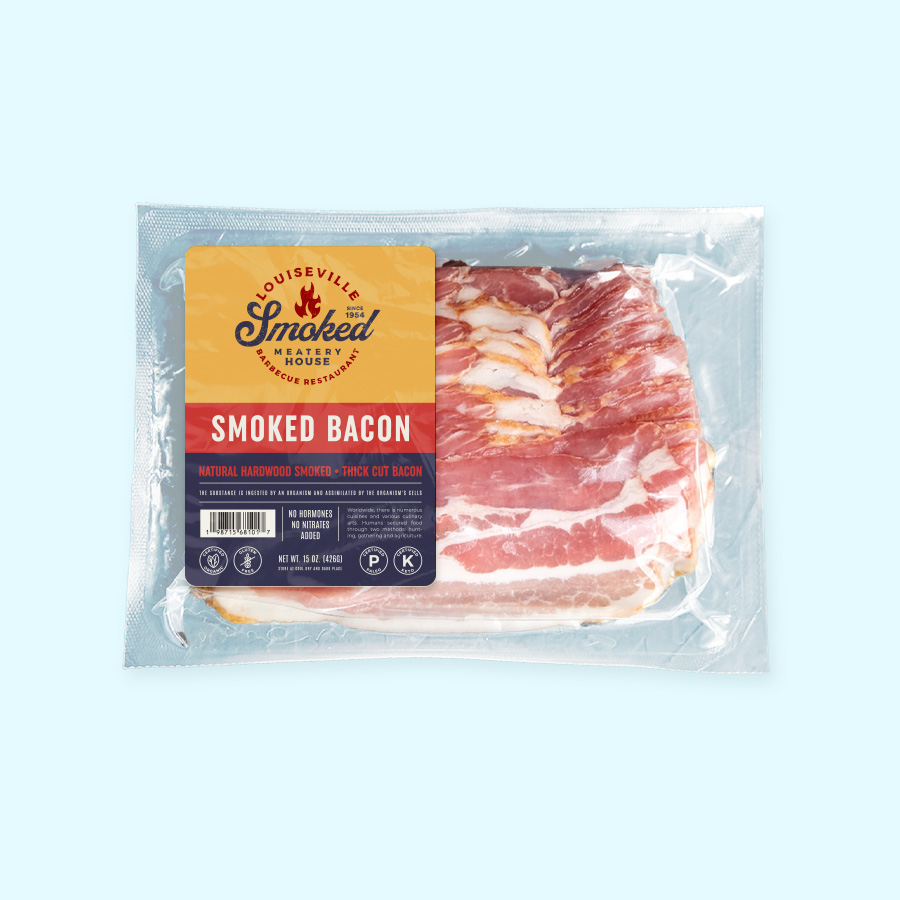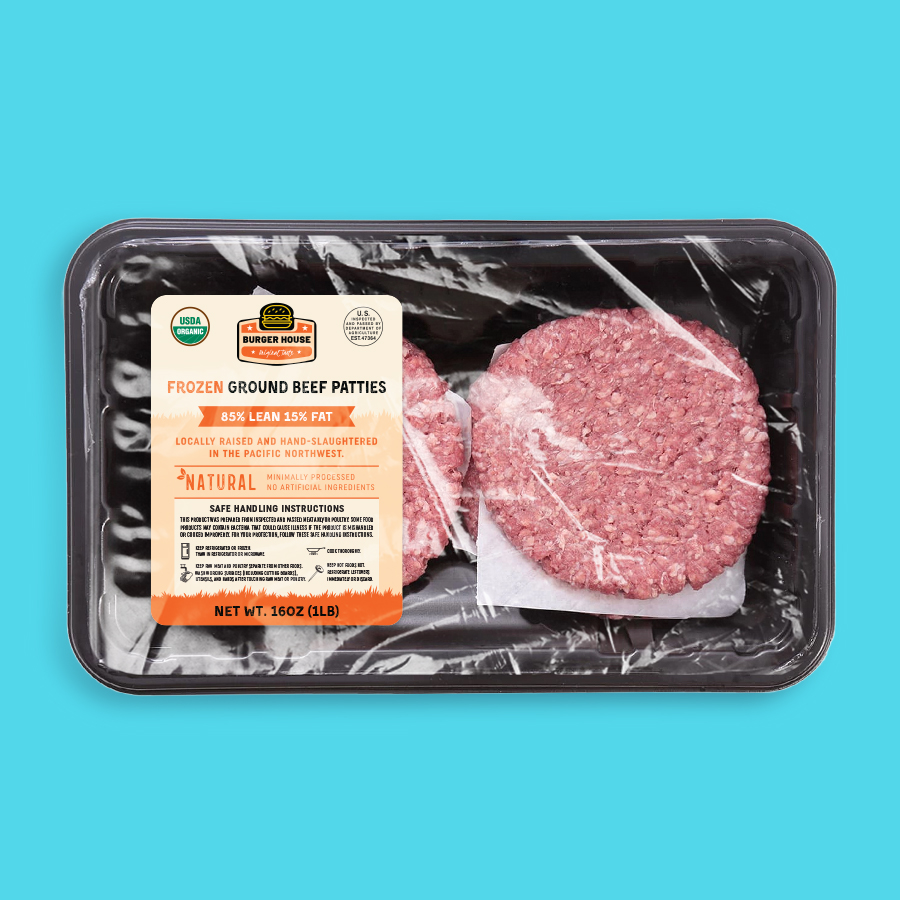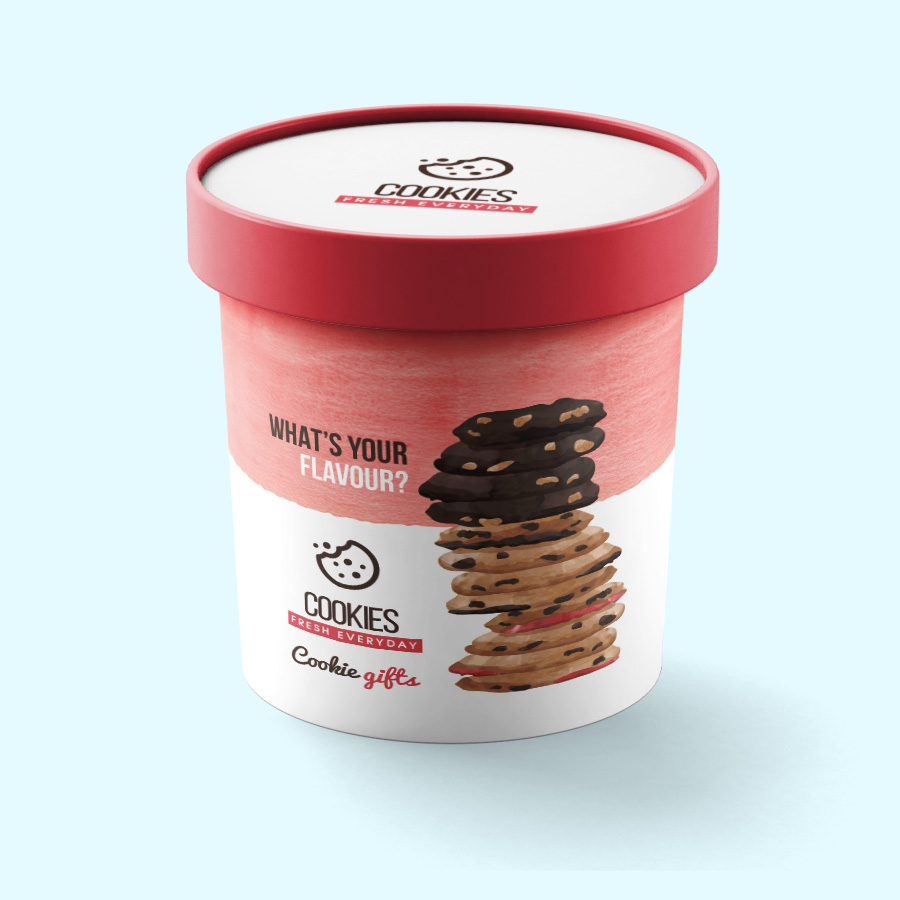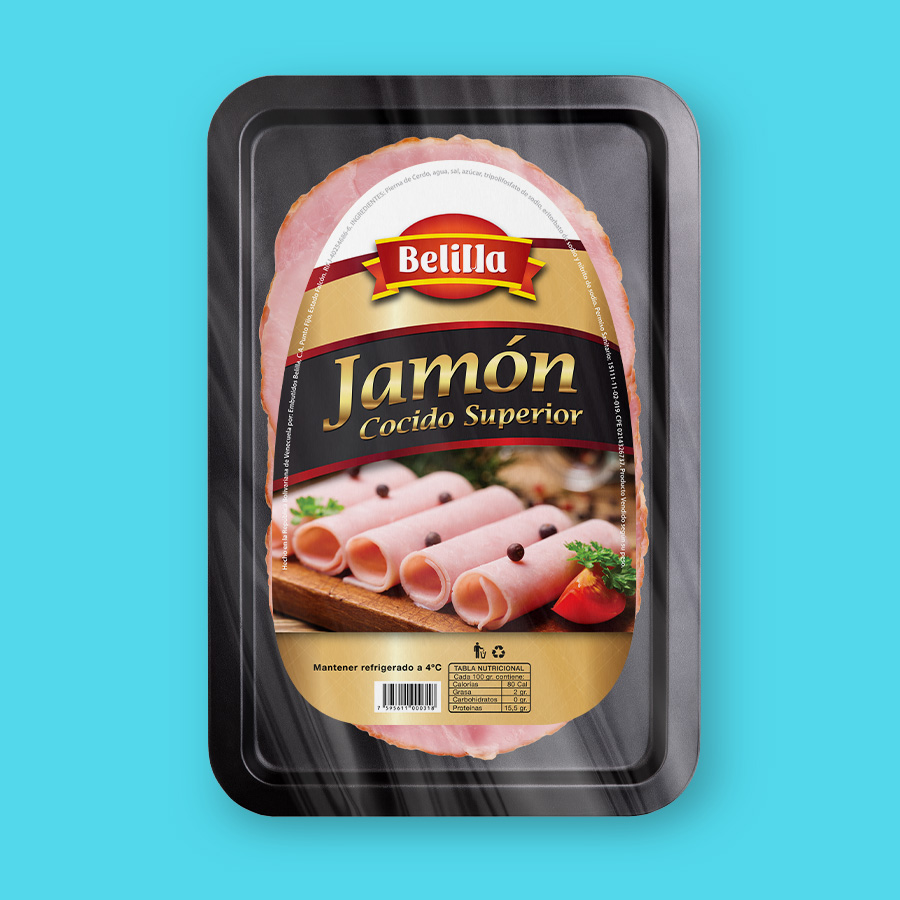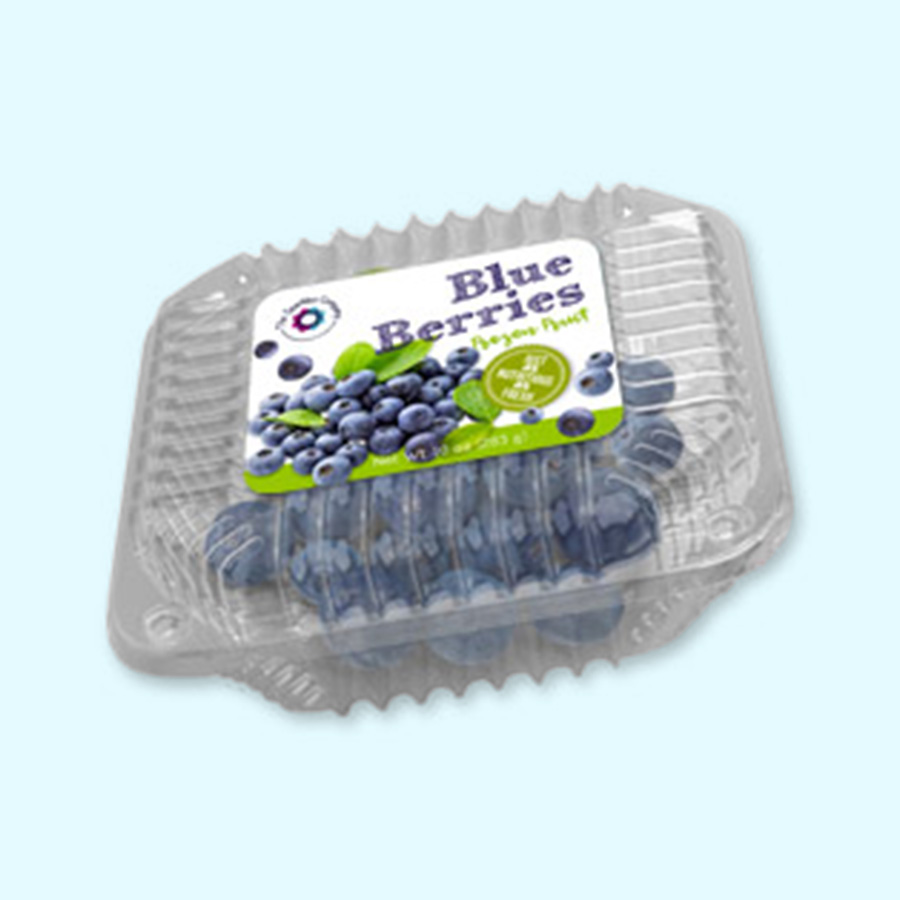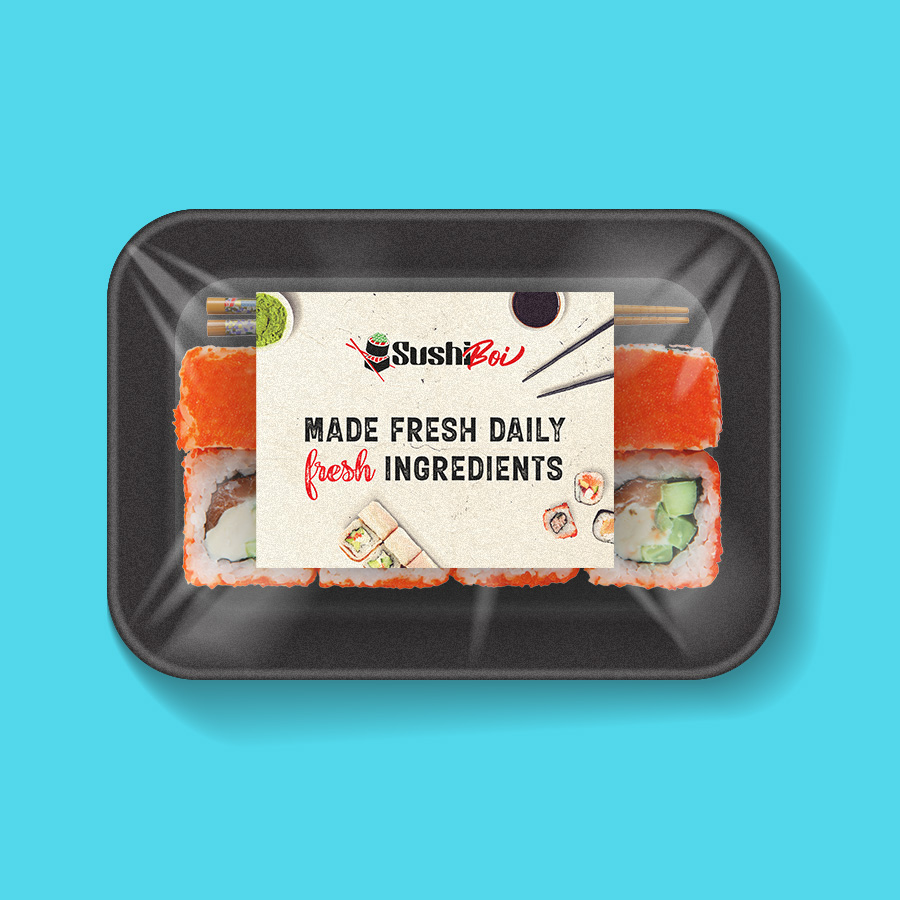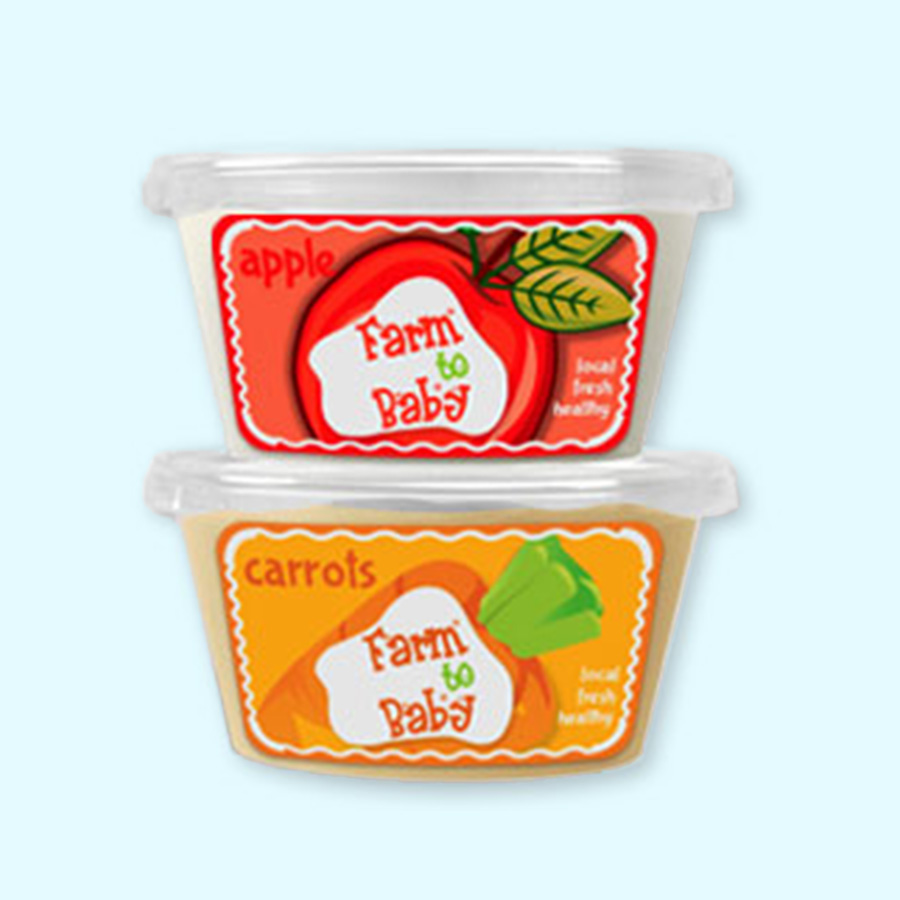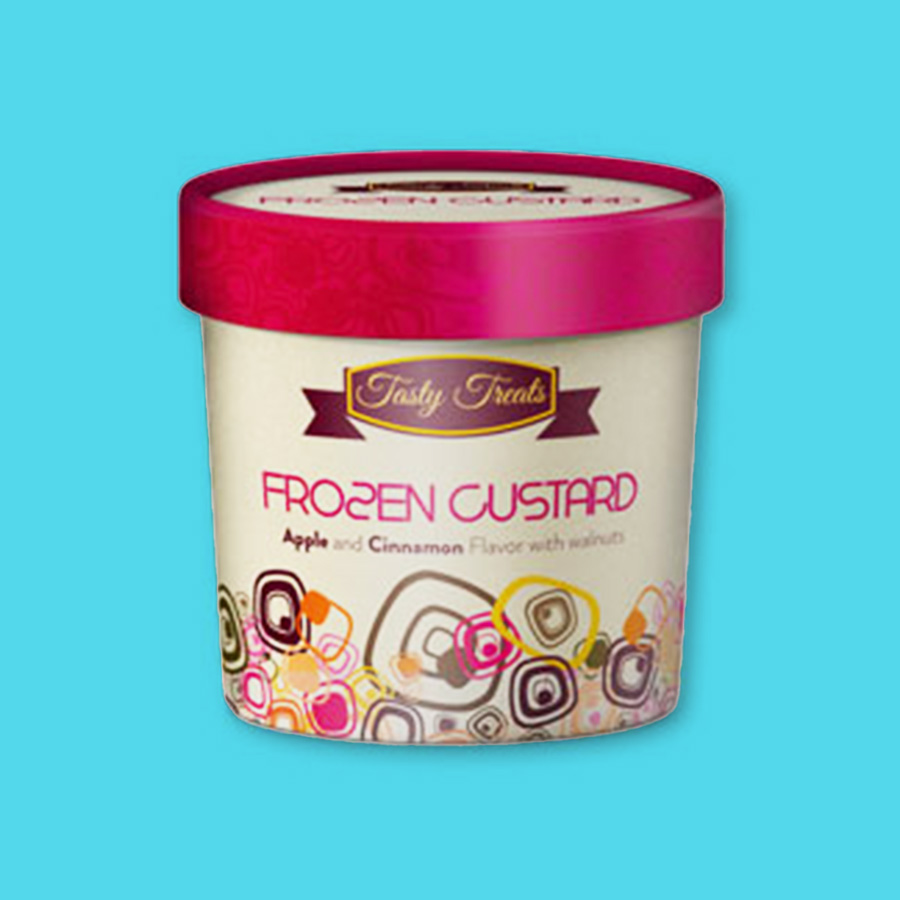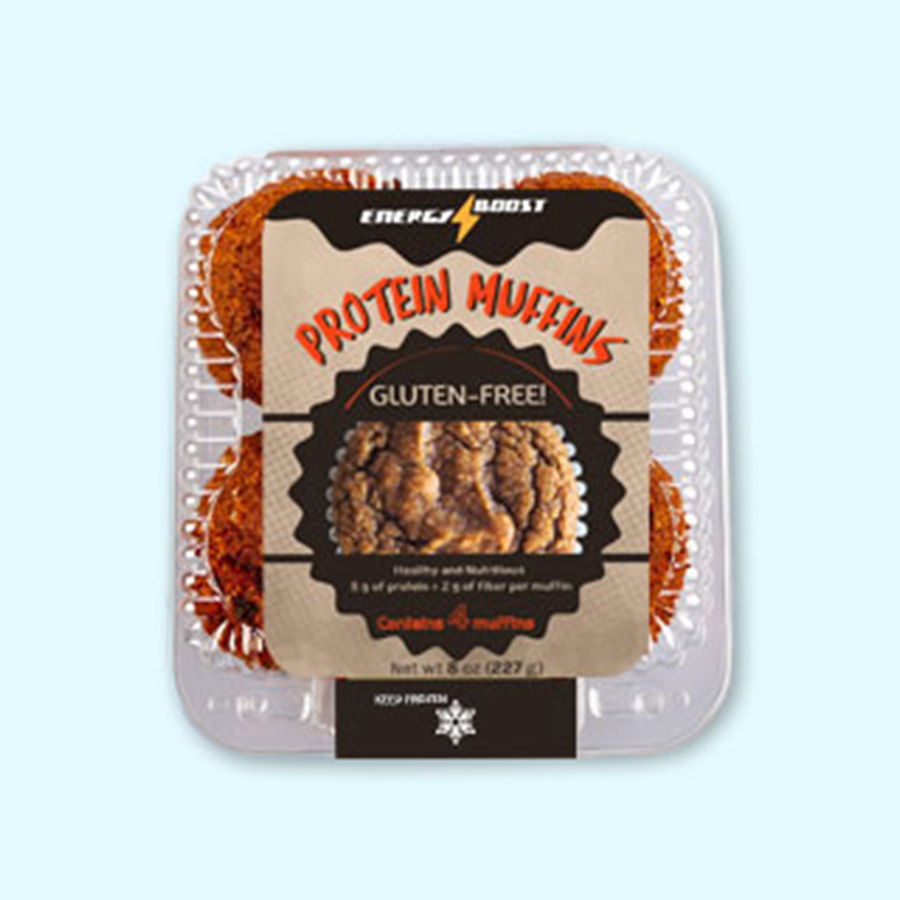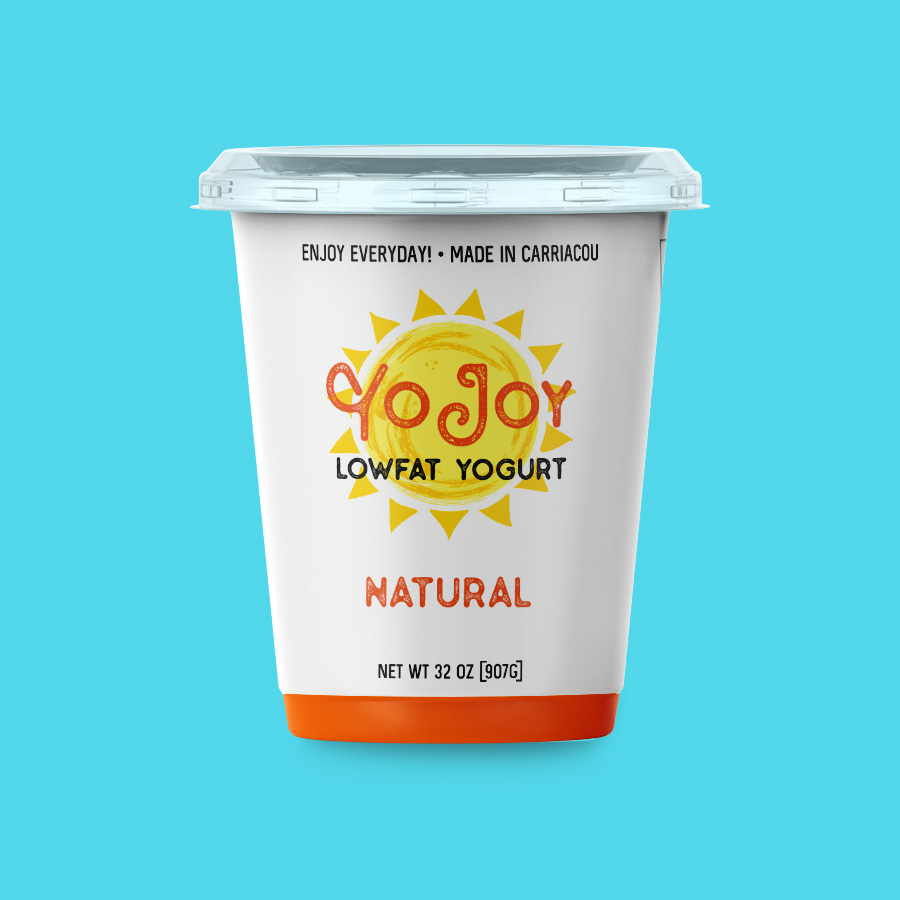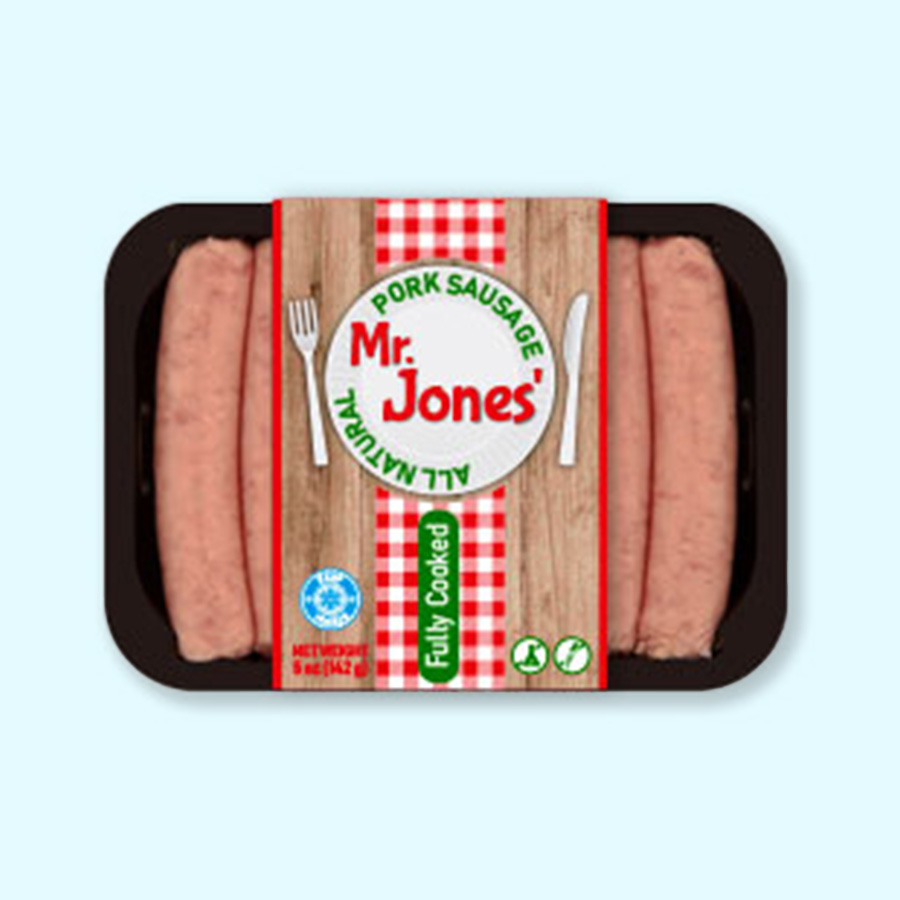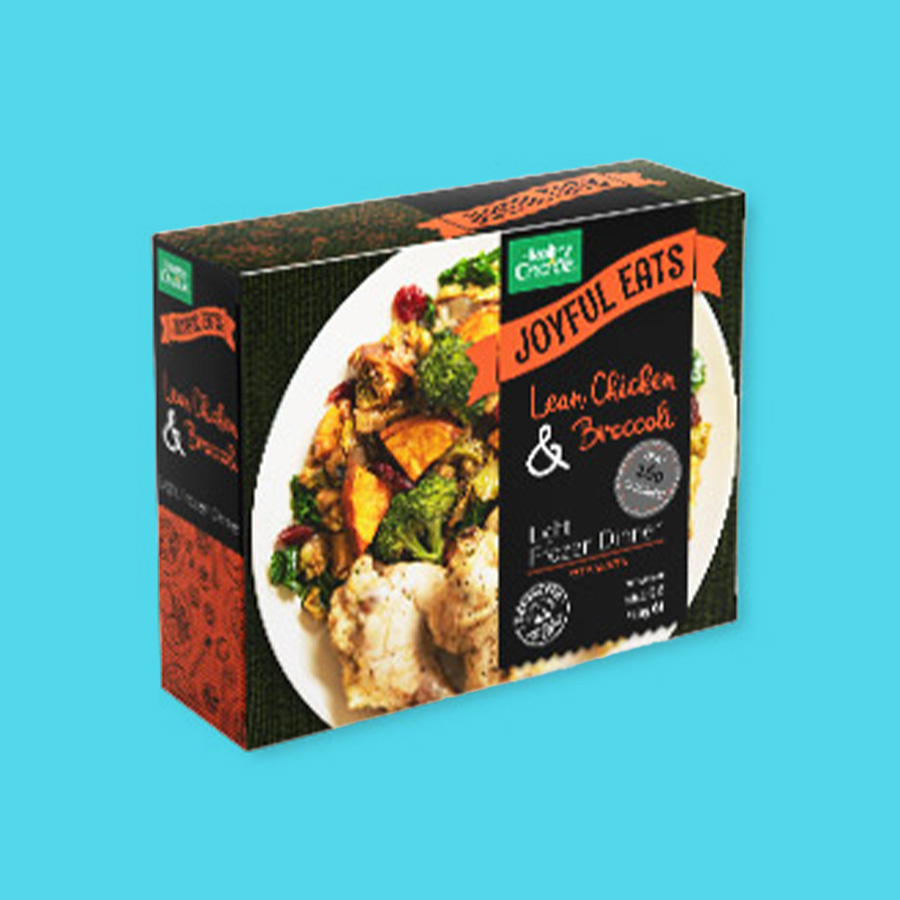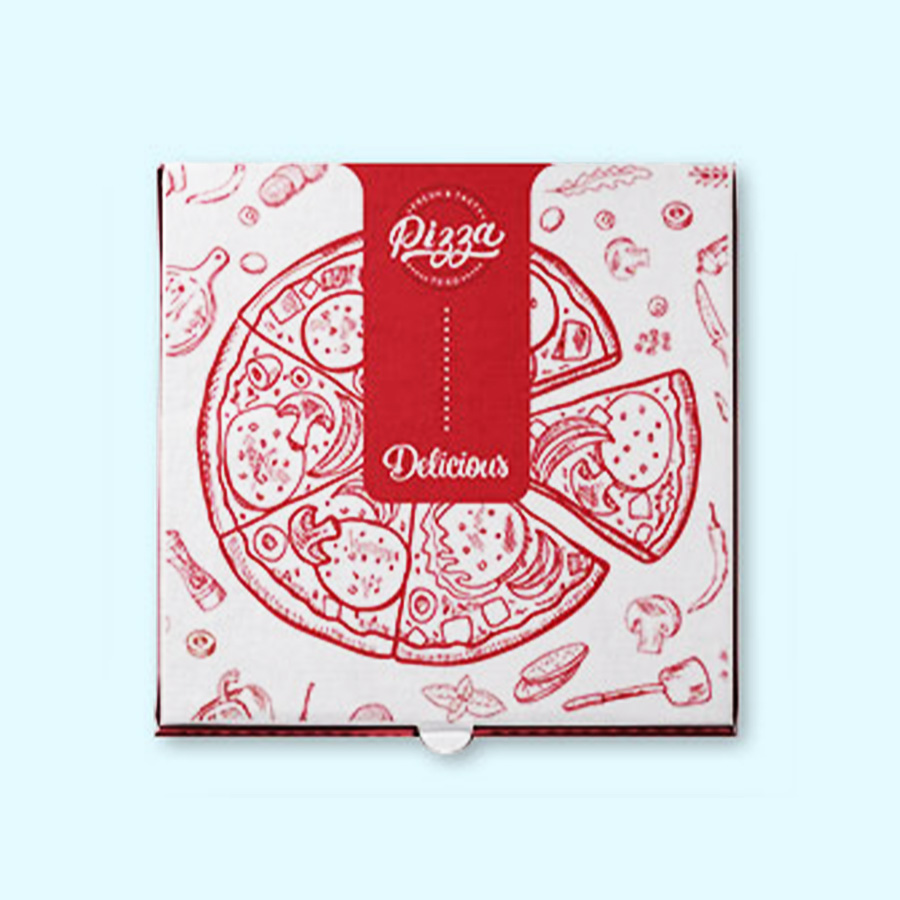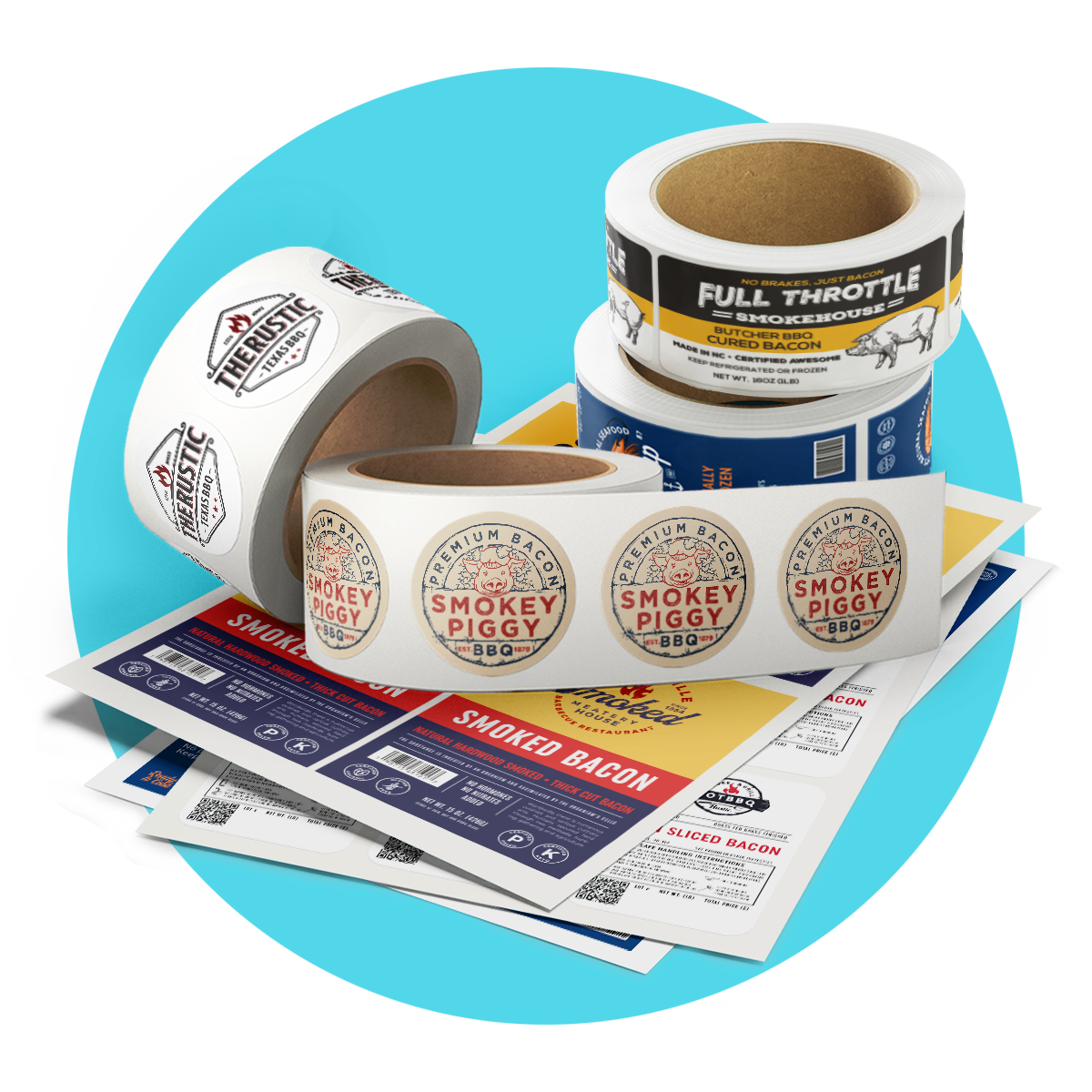
What Information Must Be on a Bacon Label?
The USDA requires strict labeling guidelines for bacon products. If you’re making traditional pork bacon, or newer variations like turkey or beef bacon, your label must reflect that clearly. For example:
Your bacon label needs to clearly communicate nutritional information, ingredients, product name, and compliance with USDA requirements.
USDA-Required Statements for Bacon Products
Depending on how the bacon is processed, your label may need to include:
There are also specific USDA requirements for labeling:
This is only a fraction of FSIS food labeling requirements and bacon manufacturers are urged to carefully study them, hire expert labeling help if needed, and comply with USDA regulations on meat labeling.
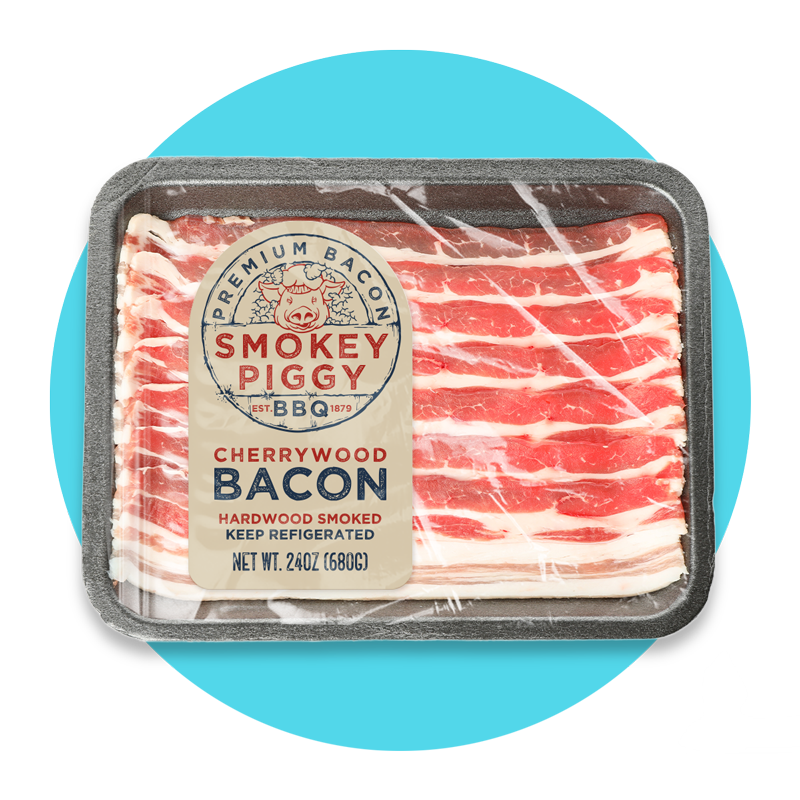
Why Freezer-Safe Labels Matter
Bacon is often frozen by consumers or retailers. Labels that peel off or degrade at low temperatures not only look unprofessional but can also lead to non-compliance.
why label your bacon
custom options available
Still have questions about bacon labels and packaging?
Call us at (702) 866-9113 to speak with one of our customer representatives.
What Do Consumers Look for in a Bacon Label?
Modern consumers want more than just branding. They look for:
Our custom bacon labels help you communicate all of this—clearly, professionally, and in full compliance with USDA standards.
USDA Safe Handling Label Requirements
Every bacon label must include safe handling instructions, such as:
These reminders reduce foodborne illness and are mandatory on all raw meat labels.
Why Choose FreezerLabels.net?
Whether you’re producing traditional pork bacon, turkey bacon, or organic cured meat products, we’ve got the right label solution for you.
Can You Eat Raw Bacon? (FAQ)
Short answer: No
While cured and smoked bacon may appear safe, it may still harbor harmful bacteria. Cooking is always the safest choice. For more information on using bacon safely, check out these questions and answers by USDA.
freezer labels we print
Customer reviews
Very Satisfied
Great service and fast turnaround. The freezer grade label options are just what our customers need.

